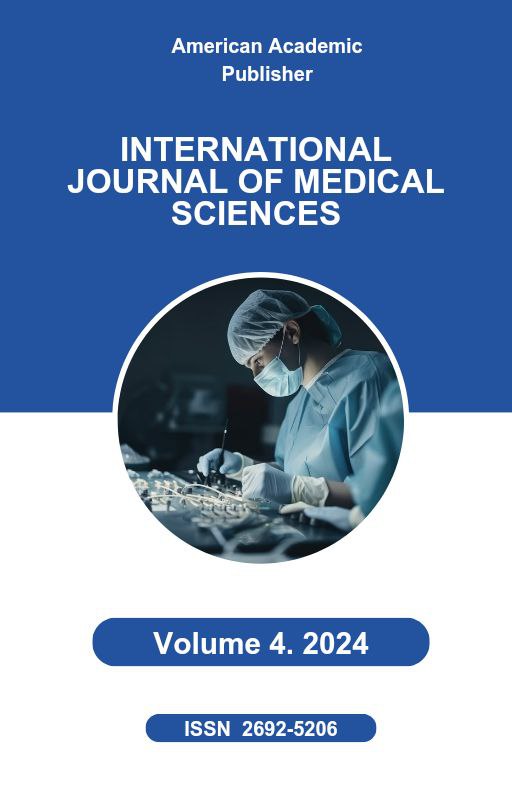 Articles
| Open Access |
https://doi.org/10.55640/
Articles
| Open Access |
https://doi.org/10.55640/
DETERMINING STUDENTS’ MOTIVATION IN DUAL AND TRADITIONAL EDUCATION USING THE “MOTYPE” METHODOLOGY
Kodirov Ismoil Norkobilovich , Professor, Department of Energy Engineering Karshi State Technical University Candidate of Physical and Mathematical SciencesAbstract
The article presents the main goals and significance of applying the dual education system in training engineers at higher education institutions. It also discusses psychological research findings on identifying the most prominent types of student motivation in dual and traditional education settings using the “Motype” methodology.
Keywords
dual and traditional education, “Motype” methodology, types of motivation, student respondents, psychological research findings.
References
Cabinet of Ministers of the Republic of Uzbekistan. (2021, March 29). Resolution No. 163 “On measures to organize dual education in the system of vocational education.” Retrieved from https://lex.uz/ru/docs/53462172; http://edu.glavsprav.ru/spb/vpo/journal/861/
Mullaboyeva, N. (2019). Kasbiy pedagogika [Professional Pedagogy]. Namangan, 364 p.
Sidakova, L. V. (2016). The essence and main features of the dual model of education. Education and Upbringing, 2, 62–64.
Rastegaeva, D. A., & Filimonyuk, L. A. (2017). Fundamentals of implementing the dual education system in the professional training of students in higher education institutions. World of Science, Culture, Education, 6(67), 110–112.
Tereshchenkova, E. V. (2014). The dual education system as a basis for training specialists. Concept: Scientific-Methodological Electronic Journal, 4, 41–45.
Uzakov, G. N., Almardanov, X. A., Kodirov, I. N., & Aliyarova, L. A. (2023). Modeling the heat balance of a solar concentrator heliopyrolysis device reactor. BIO Web of Conferences, 71, 01098, 1–11. CIBTA-II-2023, Russia. https://doi.org/10.1051/bioconf/20237101098
Kodirov, I. N. (2025). Procedures for developing and implementing a “Dual education diary” for practice in enterprises when training engineers on the basis of dual education. European Journal of Research and Reflection in Educational Sciences, 13(1), 21–30. ISSN 2056-5852.
Shumakova, O. V., Mozzherina, T. G., Komarova, S. Yu., & Gavrilova, N. V. (2016). Experience of dual education as a possibility to increase the effectiveness of professional training of students. Electronic Scientific-Methodological Journal of Omsk State Agrarian University, 4(7). Retrieved from http://e-journal
Matveev, N. V. (2015). Dual education of technical college students: advantages and risks in the assessment of graduates, teachers and employers. Bulletin of Yaroslav the Wise Novgorod State University, 5(88), 71–74.
Serkova, G. G. (2016). Dual education: Problems and prospects. Innovative Development of Vocational Education, 12, 72–76.
Kodirov, I. N. (2025). Results of organization of dual education at the level of “Industry-enterprise-highlief” and self-assessment in the formation of students’ competences in the training of qualified engineering personnel. European Journal of Research and Reflection in Educational Sciences, 13(1), 31–39. ISSN 2056-5852.
Kahhorov, S. K., & Kodirov, I. N. (2025). Organization of training qualified engineering personnel based on dual education and evaluation of students’ readiness level in this process. Pedagogical Sciences: Scientific Review, 1, 9–14.
Kodirov, I. N. (2024). Training energy engineers in higher education through the organization of dual education at the “enterprise-department” level. Zamonaviy Ta’lim / Sovremennoe Obrazovanie, 6(139), 9–16. https://doi.org/10.34920/so/vol_2024_issue_6_2
Kodirov, I. N. (2024). The role of dual education in training alternative energy specialists in cooperation with enterprises. Muallim häm úzlik siz bilimlendiriw: Scientific-Methodical Journal, Nukus, 3(3), 491–498.
Kodirov, I. N. (2024). Specific features, advantages, and disadvantages of dual education in training engineering and technical personnel. Tafakkur Ziyosi: Scientific-Methodical Journal, 2, 10–14.
Article Statistics
Downloads
Copyright License

This work is licensed under a Creative Commons Attribution 4.0 International License.

